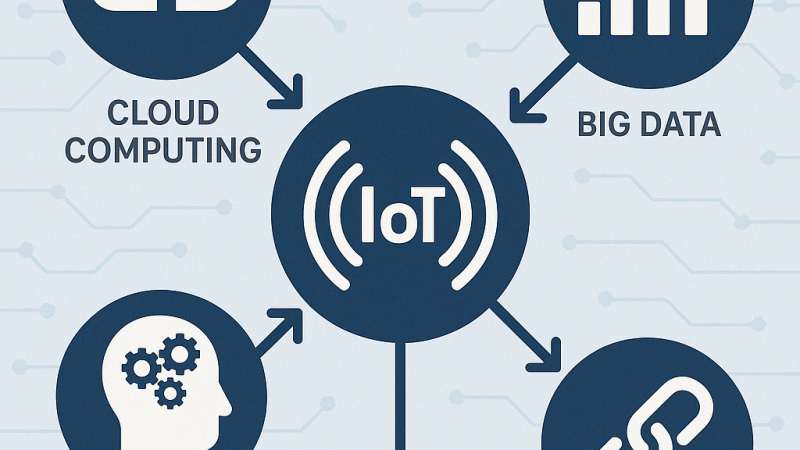5 Essential Tips For Secure Remote Working
Most businesses have adopted remote working over the last decade. Much of this growth has occurred over the previous two years due to the disruption caused by the pandemic. For businesses, remote working enables them to keep their operations running.
Employees, on the other hand, get the autonomy and the convenience they need by working remotely. However, as more companies embrace remote working, there’s a growing concern regarding business security and the protocols they need to support remote work.
To get the job done, businesses with remote employees have to grant access to company systems and networks, exposing them to heightened threats in cyberspace. But even with remote employees, there are several steps that companies can take to keep their networks and systems secure.
Below are five essential tips for securing the remote working environment:
Apply Strong Passwords
While it may sound obvious, using strong passwords is one of the critical steps that companies need to apply to secure a remote working environment. The best way to ensure that your employees use strong passwords is to put a password requirement in place.
This means that as employees log into your network, they’ll be required to use passwords that utilize special characters. Generally, passwords that are unique, long, and complex work best. Companies should also require remote employees to change their passwords every three to four months.
In addition to strong passwords, businesses should work with IT support companies like Computers In The City, to add multi-factor authentication to their sign-in processes. With such a process, they can ensure that only authorized people have access to their networks.
With multi-factor authentication, remote employees receive text messages or phone calls to verify their login process every time they sign in to the network. Though this may cause minor inconveniences to remote employees, it goes a long way in protecting the system.
Develop Policies On Remote Network Access
The other step that businesses should take to secure remote working is to develop policies that guide remote access to their networks. Such policies should define the kinds of remote access that the company allows, how permission is granted to users and devices, and levels of access.
By having tiered levels of network access, businesses can control who accesses their network, the devices they use, and what they access. For instance, a company can enact a network access policy requiring remote workers to use approved computers on the company network. Access policies may also prohibit remote workers from using public WiFi on their work laptops.
Share Sensitive Information Via Phone
Most people tend to use emails for communication whenever they’re not in the office. This is risky because it can expose sensitive information to hackers in case of a network security breach. To prevent this, businesses should advise employees to make phone calls anytime they’re conducting sensitive transactions.
They should also request multiple confirmations of wire transfer details anytime they’re sending or receiving confidential information.
Avoid Clicking On Suspicious Links
Businesses should also remind remote workers to avoid opening unfamiliar attachments or suspicious links sent via emails. With many people working remotely, hackers are constantly sending phishing attacks via email.
To ensure that your network isn’t exposed to hacking attacks, companies should encourage remote workers to check senders and the email’s subject lines to ensure legitimacy before opening attachments or clicking links.
Secure Remote Access
There are a number of ways to securely access your remote systems. One common method is to use a Virtual Private Network (VPN). A VPN uses encryption to create a secure “tunnel” between your computer and the remote system. This tunnel is used to transmit all data, including passwords, between the two systems.
Another common method is to use Secure Shell (SSH). SSH uses encryption and other security measures to create a secure connection between your computer and the remote system. Once the connection is established, all data, including passwords, is transmitted over this secure channel.
Create Cybersecurity Resources For Employees
With the heightened awareness of cybercrime, remote employees have many questions about securing the remote working environment. Companies can help them address the concerns that remote employees may have by providing them with answers to a wide range of questions that they might have.
To provide this, companies can create resources that address topics like securely completing transactions and identifying threats on emails or websites. Businesses should also provide remote workers with a contact person to reach out to if they need help or have concerns or questions.
A company network is as strong as the weakest team member. Helping employees find the help they need to keep your network safe and keeping communication lines open can keep intruders at bay.
Additionally, implementing DMARC, DKIM, BIMI and SPF record checker tools will provide an extra layer of security as well as protect you from being a victim of a phishing or spoofing attack.”
Final Thoughts
As companies across the globe seek to the recent tragedy at bay, remote work has become popular over the last two years. While remote working enables companies to continue operations, it exposes their systems and networks to many security threats, including phishing, hacking, malware, and ransomware attacks.
If your business has remote employees, applying the five tips discussed above will enable you to secure the remote working environment and keep your systems and network safe.






